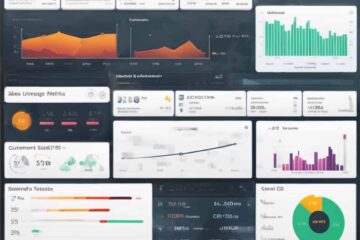With the rapid evolution of sales strategies, incorporating gamification into the sales process has emerged as a powerful tool to motivate sales teams and boost productivity.
This post provides a comprehensive guide on how to gamify your sales process effectively to drive tangible results and achieve your business objectives. Let’s probe the key strategies and best practices to unleash the full potential of gamification in your sales management.
- Key Takeaways:
- Understand your sales process.
- Set clear objectives.
- Identify meaningful KPIs
- Design engaging game elements.
- Provide rewards and recognition.
- Collect feedback and iterate.
- Celebrate successes.
- Utilize Beest.app’s gamification features.
Laying the Groundwork for Gamification
One key step in gamifying your sales process is identifying the core sales metrics that are crucial to your business. These metrics could include things like conversion rates, average deal size, number of new leads, and sales cycle length.
By focusing on these key metrics, you can establish a baseline for your sales performance.
Note, however, that though metrics are necessary, setting achievable and motivating goals is equally important when gamifying your sales process. It’s crucial to define clear, specific, and realistic goals that challenge your sales team while still being within reach.
These goals should be tied to the core sales metrics you’ve identified and should be designed to drive performance and results.
Understanding what motivates your sales team is also crucial when setting goals. Whether it’s monetary incentives, recognition, or competition, tailoring the goals to align with what drives your team will ensure they are engaged and committed to achieving success.
Designing Your Sales Gamification Strategy
Gamifying your sales process involves strategic planning and the right tools to engage and motivate your team effectively.
Here are five key steps to successfully implement gamification in your sales management.
1. Designing Your Sales Gamification Strategy
Start by defining clear goals and objectives for your gamification initiative. Identify key behaviors and outcomes that you want to encourage among your sales team.
It’s essential to align the gamification strategy with your overall sales targets and company values to ensure it complements and enhances your sales efforts.
2. Choosing the Right Gamification Elements
Select gamification elements that resonate with your sales team and support your objectives. Options include leaderboards, point systems, badges, and rewards that recognize and incentivize top performers.
Ensure these elements are appealing and relevant to your team, fostering healthy competition and ongoing motivation.
3. Implementing Technology and Tools
Adopt a robust gamification platform that integrates with your current sales and CRM systems. This technology should automate tracking, offer real-time performance insights, and simplify the management of your gamification strategy.
Effective integration ensures a seamless experience for your team and maximizes the benefits of gamification.
4. Training and Onboarding
Educate your sales team on the gamification tools and the benefits they bring. A comprehensive onboarding process ensures everyone understands how to participate and what they need to do to succeed.
Continuous training and support keep the team engaged and informed about any updates or changes to the gamification strategy.
5. Monitoring and Adjusting
Regularly assess the effectiveness of your gamification strategy and make adjustments as needed. Monitor key performance indicators to measure engagement and outcomes, and gather feedback from your team to refine the approach.
Adapting your strategy based on actual results and team input can help you maintain relevance and effectiveness over time.

Engaging and Motivating Your Sales Team with Beest.app
Creating a dynamic and motivated sales team involves strategically implementing gamification to foster a culture of competition, recognition, and continuous improvement.
To inject a healthy sense of competition among your sales team, introduce gamification elements like leaderboards, sales challenges, and performance metrics. These tools drive performance and boost morale by making daily tasks more engaging and exciting.
Encouraging this friendly competition enhances productivity and instills a spirit of continuous self-improvement and team cohesion.
It’s crucial to acknowledge and reward the efforts of your sales team. Public recognition of top performers through awards or mentions in meetings can significantly lift morale and motivate others.
Incorporating a variety of rewards, such as bonuses, additional leave days, or personalized gifts, emphasizes the value of hard work and success within the team.
Celebrating these achievements helps to cultivate an environment where excellence is both recognized and rewarded.
How Beest.app Enhances Sales Management and Efficiency Through Gamification
Beest.app is a trusted sales management software that’s capable of significantly enhancing sales management and efficiency by incorporating gamification into everyday sales activities.
Its features transform routine tasks into engaging challenges that reward and motivate sales teams, fostering a culture of continuous improvement and healthy competition. By utilizing real-time tracking and leaderboards, Beest keeps sales teams engaged, providing instant feedback on their progress and achievements.
This gamified approach boosts motivation and drives sales performance by making every sales activity meaningful and rewarding.
Check out these gamification tools and features Beest.app offers that sales managers can surely find helpful.
- Points Pursuit: Converts daily sales activities into point-based achievements to motivate and engage sales teams.
- Real-Time Tracking: Allows sales agents to monitor their progress and standing instantly, enhancing transparency and motivation.
- Leaderboards: Displays rankings to foster a competitive environment that encourages performance improvement.
- Merit Markers: Links tangible rewards to specific sales achievements, directly motivating sales agents to excel.
- Rewards and Recognition: Quickly acknowledges and rewards outstanding performance, aligning with team goals and values.
- Feedback Fuel: Provides tailored feedback and improvement resources, ensuring continuous professional development.
- Performance Data Integration: Combines sales performance data with personalized feedback, optimizing sales strategies.
- Actionable Insights: Offers specific, actionable steps for individual improvement based on performance evaluations.
Monitoring, Analyzing, and Iterating
To ensure the success of your gamification strategy, it’s essential to monitor its effect on key sales metrics such as lead conversion rates, sales cycle length, and revenue generated.
By using analytics tools to track these metrics, you can gather data to understand how gamification impacts your sales process and make informed decisions on necessary refinements.
Gamification requires ongoing refinement to remain effective. Regularly analyze the performance data and collect feedback from your sales team to identify areas that need improvement, such as adjustments to point systems, game mechanics, or rewards structures.
This iterative process is key to maintaining motivation and engagement within your sales team, ultimately driving better results and ensuring continuous improvement in your sales process.

Final Thoughts | Unlock the Power of Play – Supercharge Your Sales Team with Beest.app
Embracing gamification with Beest.app can transform your sales process, making it not just more enjoyable for your team but also significantly more productive.
By applying the strategies in our playbook, you’ll see heightened engagement and motivation, leading to stellar performance and enhanced business outcomes. Tailor these innovative techniques to meet your unique needs and witness your sales metrics climb to unprecedented levels.
Don’t miss the opportunity to elevate your field sales management—invest in Beest.app today and propel your team towards unparalleled success!
Frequently Asked Questions
What is gamification in the context of a sales process?
Gamification in the context of a sales process involves applying game-design elements to engage and motivate individuals to achieve specific goals.
How can gamifying the sales process drive results?
Gamifying the sales process drives results by increasing employee engagement, motivation, and performance through competition, rewards, and feedback.
What are some examples of gamification techniques that can be used in sales?
Gamification techniques in sales can include leaderboards, badges or points for milestones, sales challenges, and rewards for top performers.
How can a company implement gamification in its sales process effectively?
To effectively implement gamification in a sales process, a company should define clear goals, choose appropriate game mechanics, clearly communicate rules and rewards, and continuously track and adjust based on performance data.
What are the benefits of using gamification in the sales process?
Benefits of using gamification in the sales process include increased motivation and engagement, enhanced performance and productivity, better learning and skill development, and a more enjoyable work environment that promotes collaboration and competition.


















